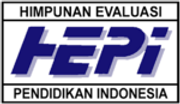Specifications for Textbook Materials at Madrasah Ibtidaiyah
Abstract
This study aims to find the specification of textbook material for grade 1 Madrasah Ibtidaiyah (MI) in Salatiga City. This study used descriptive qualitative and descriptive quantitative approaches. A qualitative descriptive approach was employed to describe the data obtained through the interview method, with the type of guided interview. The interview method used an interview guide instrument, analyzed through the stages of analyzing data, reducing data, categorizing data, interpreting data, and drawing conclusions. Meanwhile, a quantitative descriptive approach was utilized to describe the data obtained through a questionnaire, which used a filling type questionnaire. Questionnaire data were then analyzed using descriptive statistical formulas. The study results found that the material specifications for the MI grade 1 textbook in Salatiga City had been adjusted to the core competencies (KI) and basic competencies (KD) set by the government; the development of the material was sourced from information technology that can be accounted for and from similar books; the material was adapted to the students' abilities; the material was adapted to the conditions of the student's cultural environment; the material paid attention to the condition of student diversity; the material contains factual truths and concepts; supporting learning; the material begins with question and command sentences. The theoretical implication of this finding is that it can be used as a reference in assessing and developing textbooks at MI.
Keywords
Full Text:
PDFReferences
Ahmadong, H., Kade, A., & Sabang, S. (2017). Meningkatkan Hasil Belajar Siswa Pada Mata Pelajaran Sains Melalui Penggunaan Alat Peraga di Kelas V SDN 1 Dolong A. 5(2), 44–51.
Aslan, C. (2010). An analysis of Turkish and French literature textbooks’ outer structure and visual elements. Procedia - Social and Behavioral Sciences, 2(2), 880–889. https://doi.org/10.1016/j.sbspro.2010.03.120
Asri, A. S. (2017). Telaah Buku Teks Pegangan Guru Dan Siswa Pada Mata Pelajaran Bahasa Indonesia Kelas Vii Berbasis Kurikulum 2013. RETORIKA: Jurnal Ilmu Bahasa, 3(1), 70–82. https://doi.org/10.22225/jr.3.1.94.70-82
Atay, M., & Danju, I. (2012). Analysis of 1st Grade and 5th Grade Textbooks and Primary School Student’s Views About Personal Traits in Gender Role in Society. Procedia - Social and Behavioral Sciences, 47(October), 64–73. https://doi.org/10.1016/j.sbspro.2012.06.614
Badea, M., & Iridon, C. (2015). Students’ Evaluation of a Romanian Language Textbook. Procedia - Social and Behavioral Sciences, 203, 303–309. https://doi.org/10.1016/j.sbspro.2015.08.299
Barus, Y. K., & Djukri. (2013). Pengembangan Buku Teks Tematik Tema Permainan Untuk Kelas III SDN Triadi Sleman Yogyakarta. 1(2), 208–221.
Çobanoǧlu, E. O., Şahin, B., & Karakaya, Ç. (2009). Examination of the biology textbook for 10th grades in high school education and the ideas of the pre-service teachers. Procedia - Social and Behavioral Sciences, 1(1), 2504–2512. https://doi.org/10.1016/j.sbspro.2009.01.442
Ernawati, Y. (2018). Telaah Buku Teks Tematik Terpadu Kelas Iv Sd Kurikulum 2013. Jurnal Ilmiah Bina Edukasi, 11(2), 109–123. https://doi.org/10.33557/jedukasi.v11i2.223
Farzaneh, N., Kohandani, M., & Nejadansari, D. (2014). A Textbook Evaluation of Socio-cultural Contexts in Top Notch Series. Procedia - Social and Behavioral Sciences, 98, 472–481. https://doi.org/10.1016/j.sbspro.2014.03.442
Firdaus, A., Samhati, S., & Suyanto, E. (2014). Analisis Kelayakan Isi Buku teks Bahasa Indonesia Terbitan Erlangga VII SMP/MTs. Jurnal Kata (Bahasa, Sastra, Dan Pembelajarannya), 2(4), 1–12.
Franzolin, F., & Bizzo, N. (2015). Types of Deviation in Genetics Knowledge Presented in Textbooks Relative to the Reference Literature. Procedia - Social and Behavioral Sciences, 167, 223–228. https://doi.org/10.1016/j.sbspro.2014.12.666
Harsono, Y. M. (2015). Developing Learning Materials for Specific Purposes. TEFLIN Journal - A Publication on the Teaching and Learning of English, 18(2), 169. https://doi.org/10.15639/teflinjournal.v18i2/169-179
Kurbaita, Zulkardi, & Siroj. (2013). Pengembangan Buku Ajar Matematika Tematik Integratif Materi Pengukuran Berat Benda untuk Kelas I SD. Kreano: Jurnal Matematika Kreatif-Inovatif, 4(1), 1–10.
Llorent, V. J. (2012). Curricular Planning from a New Perspective: Diversity, Gender and Textbooks. Procedia - Social and Behavioral Sciences, 47, 1529–1533. https://doi.org/10.1016/j.sbspro.2012.06.855
Mahmood, K., Iqbal, M. Z., & Saeed, M. (2009). Textbook Evaluation Through Quality Indicators : The Case of Pakistan. Bulletin of Education and Research, 31(2), 1–27.
Mohammadi, M., & Abdi, H. (2014). Textbook Evaluation: A Case Study. Procedia - Social and Behavioral Sciences, 98(1994), 1148–1155. https://doi.org/10.1016/j.sbspro.2014.03.528
Moleong, L. J. (2008). Metode Penelitian Kualitatif. Bandung: Remaja Rosdakarya.
Muljono, P. (2007). Kegiatan Penilaian Buku Teks Pelajaran Pendidikan Dasar dan Menengah. Buletin BSNP Media Komunikasi Dan Dialog Standar Pendidikan, II(1), 1–24.
Pinto, L. E. (2007). Textbook Publishing, Textbooks, and Democracy: A Case Study. Journal of Thought, 42(12), 99–121.
Prihartini, A. (2015). Pengintegrasian Konten Budaya Lokal Dalam Buku Tematik Pegangan Siswa Kelas V Sekolah Dasar. Lingua, 12(2), 173–186.
Roubides, P. (2015). An Instructional Design Process for Undergraduate Mathematics Curriculum Online. Procedia Computer Science, 65(April), 294–303. https://doi.org/10.1016/j.procs.2015.09.083
Simatwa, E. M. W. (2010). Piaget’s theory of intellectual development and its implication for instructional management at presecondary school level. Educational Research and Reviews, 5(7), 366–371.
Sinaga, E., Saragi, D., & Azhari, I. (2017). The Development of Initial Textbook Product of Local Historical Heritage for Class VI Students of Primary School in Raya District of Simalungun Indonesia. British Journal of Education, 5(10), 62–75.
Suhendi. (2014). Pembelajaran Sains Dalam Desain Pendekatan Tematik Integratif. Jurnal Tarbawiyah, 11(2), 221–234.
Susanti, R. D. (2013). Studi Analisis Materi Ajar “Buku Teks Pelajaran“ Pada Mata Pelajaran Bahasa Arab di Kelas Tinggi Madrasah Ibtidiyah. Arabia, 5(2), 199–223.
Tüm, G., & Uğuz, S. (2014). An Investigation on the Cultural Elements in a Turkish Textbook for Foreigners. Procedia - Social and Behavioral Sciences, 158, 356–363. https://doi.org/10.1016/j.sbspro.2014.12.100
Zhao, X., & Zhu, L. (2012). Schema theory and college English reading teaching. English Language Teaching, 5(11), 111–117. https://doi.org/10.5539/elt.v5n11p111
DOI: https://doi.org/10.18326/mdr.v14i1.86-101
Refbacks
- There are currently no refbacks.
Copyright (c) 2022 Suwardi Suwardi, Burhan Yusuf Habibi

This work is licensed under a Creative Commons Attribution 4.0 International License.

This work is licensed under a Creative Commons Attribution 4.0 International License.
Program Studi Pendidikan Guru Madrasah Ibtidaiyah (PGMI)
Universitas Islam Negeri (UIN) Salatiga, Indonesia
Jl. Lingkar Salatiga Km. 2 Pulutan, Sidorejo, Kota Salatiga, Jawa Tengah 50716,
Telp. (0298) 323706 – Fax. (0298) 323433
Technical Support: jurnalmudarrisa@iainsalatiga.ac.id
P-ISSN: 2085-2061
E-ISSN: 2541-3457



